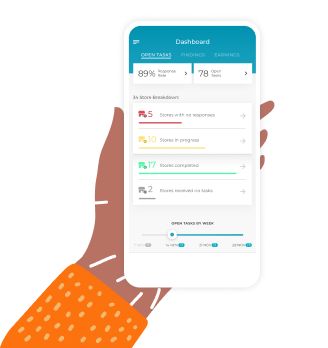One of the biggest in-store innovation success stories of the last 20 years in brick and mortar retail has been the Apple store. Entering the market after the wildly effective reworking of the entire Apple brand, these stores were an innovative new way for tech manufacturers to directly reach customers. The Apple store has become as much a part of the Apple company as the iPhone and MacBook, and now, in the changing face of the retail market, the company is continuing to rework and expand their in-store experience to better serve shoppers.
There’s a lot here for other retailers to learn. Apple has long been known for their “walled garden,” vertically integrated approach to consumer and business electronics. They not only build the hardware but also rigorously control the software and license their accessories, creating a well-earned reputation as a stable option for both businesses and home users alike while also giving them the largest market share in the American cell phone market for a single manufacturer. The Apple store has been an extension of this methodology, and as a result Apple has become the first trillion-dollar company on Earth. So what lessons can we glean from the runaway success of Apple’s retail concept?
How It Began
The first Apple stores were opened in Tyson’s, Virginia and Glendale, California in 2001. It was considered a gamble at first, as Apple had tried and failed with store within a store concepts up until that point. But instead, the stores did surprisingly well, bringing in revenue and quickly becoming a fixture of the brand as many new locations were added. While corporate, single-brand boutiques were not a new idea, Apple brought their signature style to each location, allowing for an at the time unprecedented level of success, and inspiring competitors like Microsoft to develop their own brick-and-mortar concepts.
Destination: Apple
Arguably the single most important aspect of Apple’s continuing strategy of in-store innovation has been to make the Apple store a destination. While many of these are part of larger shopping malls, many locations stand alone, and all are highly designed and distinct. They fit into the larger unified aesthetic of Apple’s industrial design, with large, open floorplans that echo the curves and colors of iPhones and center the products. These locations stand out from nearby retail outlets, drawing in foot traffic and creating a footprint. They also give Apple a location to showcase their strengths in a controlled environment, an advantage over the more common big box concept where electronics are often sold.
Similarly, Apple stores are highly focused on the customer experience. The Genius concept marries tech support and retail, allowing customers to come in and get their devices looked at and even repaired by qualified technicians in the same location where they purchased the item. Products are laid out and always ready to be demoed, allowing shoppers a chance to really engage with their potential purchases before taking out the credit card. And of course, each store is tied into Apple’s services, allowing for in-store pickup of online orders to be coupled with knowledgeable staff.
New Innovations
More recently, Apple has taken the destination idea even further. They’ve revamped several locations into a “Town Square” concept where shoppers can spend time, by adding architectural features to draw people in and keep them there. The Today at Apple program offers educational experiences that tie directly into Apple products, centering the brand while also turning the Apple store into a place to learn. Even the Genius Bar is being re-branded into the Genius Grove, making the somewhat stressful experience of tech support a more calming one.
Lessons Learned
So, what’s the takeaway? Well, in-store innovation needs to be approachable in order to relate to customers. While high-tech halo features can draw customers in, they need to feel comfortable interacting with such products and retail features. The integration between online and in-store retail should be as seamless as possible. Apple offers reservations for those looking to visit a Genius or pick up an item, and the open floorplans and roaming associates makes pickup of online orders an organic part of the experience, rather than being siloed to a separate section. Walmart’s Pickup Towers work in a similar way by integrating online orders into the sales floor.
Also, make a store into a destination by offering value added features. By working with customers to better meet their needs, retailers can specialize the brick-and-mortar experience and leverage the advantages of the format to drive engagement. Providing support and incentives both before and after the sale keeps customers coming back. Brick-and-mortar outlets aren’t just places to grab products, they’ve long been places for people to spend time. Leaning into this natural tendency and bringing in-store innovation with a friendly, approachable face can turn a store into an iconic fixture.
Explore our blog to read more about things like Blockchain in Retail and How to Sell Absurd Amounts of Designer Denim. If you’re curious about how machine learning can help improve store operations, read more here and here.



